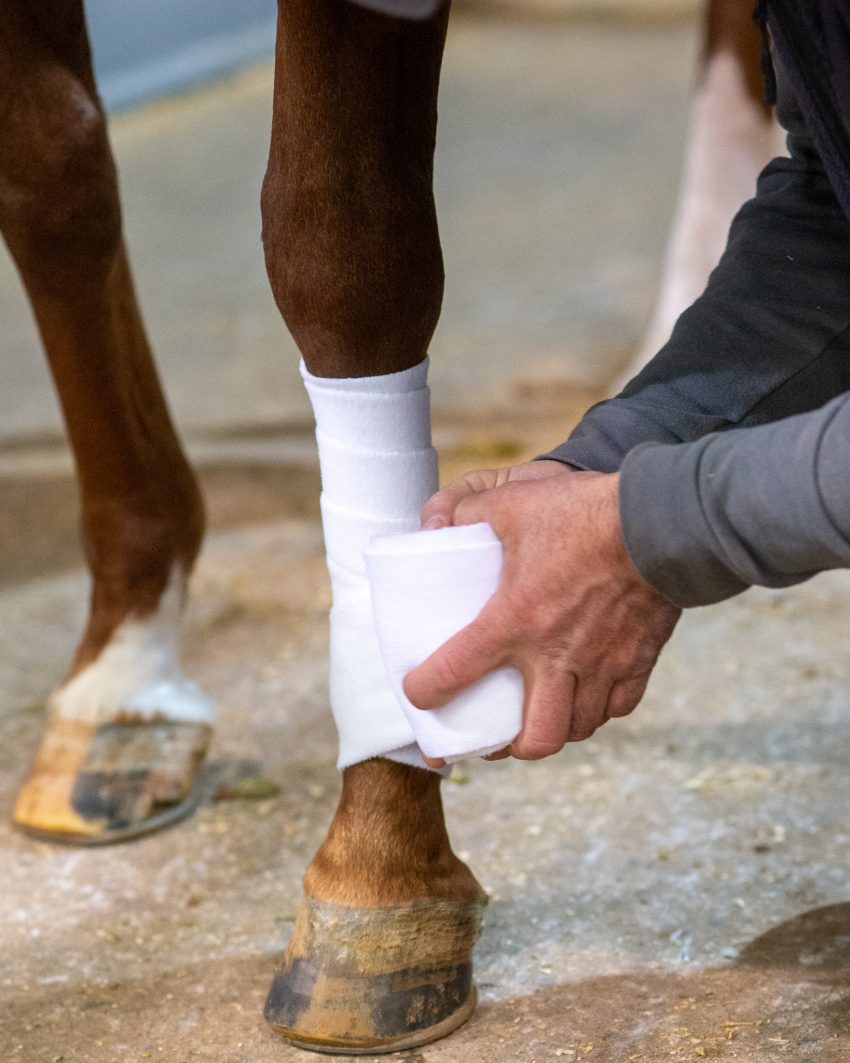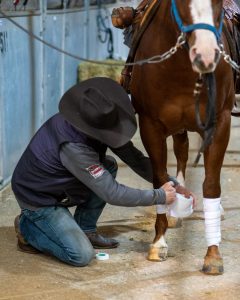
With high-tech materials and easy application, the popularity of equine sports boots is steadily growing; however, many reiners still prefer to use traditional polo wraps. NRHA Professional Seth Ingram, of Purcell, Okla., is one of these.
“I wrap polos because I like them,” Ingram stated. “First of all, I like the cost-effectiveness of them. For $20 or $25 bucks I can buy 4 polo wraps, or my sports medicine boots at $90 or $120 will last me 3 months if I’m using them every day. On the polo wraps, until they fall apart, I can keep using them.”
Polo Wraps are usually made out of breathable, forgiving fleece that doesn’t allow excess heat to build up like traditional sports boots can. They conform better to the horse’s leg and still protect against contusions and concussion while still supporting tendons and ligaments.
In most cases, polo wraps are a sound choice if you know how to use them. Wrapping them in the wrong direction can easily bow a tendon. Make them too tight and they can interfere with circulation and cause pain for the horse. Too loose of a wrap may allow them to unravel while riding and scare the horse at best, or worse, trip him, and also leave the leg unprotected.
Ingram added, “You can keep the evenness on the leg a lot better with polo wraps. Whereas on a sports boot, you’re only as good as that Velcro and that boot, and how well it fits. The polos allow you a little more freedom to create a really custom fit as they conform to the leg a lot better and don’t allow dirt and debris to get in and rub against the skin.”
Ingram advises that if you have never applied leg wraps before, it is a good idea to find someone knowledgeable to help you. In this article, Ingram explains how he wraps his horses’ legs.
How to Apply
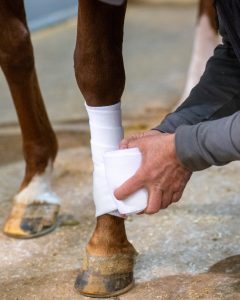
To begin, you will want to be sure that your polo wraps are properly prepared. If they are new, unroll them and roll them back up starting with the Velcro tabs inside the roll.
When you are ready to wrap, it is important to first feel along the leg to be sure that it is clean and free of dirt and other irritants. If you are wrapping for the first time, check carefully for heat or swelling so you will have a guide when you check again after removing the wraps. If there is heat and swelling after your ride and there wasn’t before, and your horse didn’t injure himself during the ride. You may need to check your wrapping technique with an experienced person before the next time you use polos.
When the legs are clean, Ingram starts by placing the outside of the end of the roll in the groove on the inside of the leg between the cannon bone and the tendons just below the knee. Take care that you have the outside of the roll against the horse’s leg, or your Velcro will be on the wrong side when you finish.
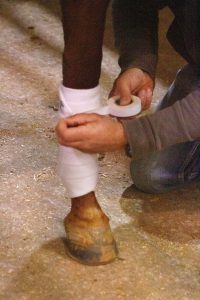
Bring the wrap forward to the front of the cannon, around the cannon and back around the rear part of the leg to where you started. Always wrap each leg from the front of the horse to the back, or if it is easier to remember, clockwise on a horse’s right leg and counterclockwise on a left leg.
“I always want to have a nice clean even wrap all the way down. When I get down to the fetlock, I like to bring it under, give it a nice little pull, and keep it nice and clean all the way back up,” Ingram explained.
Try to keep even pressure on the leg for each wrap, and remember that if you do need to tighten things up, you pull the wrap across the front of the leg, not across the tendons. Let it wrap gently around the back of the leg and take any tension you need from across the front letting the cannon bone take the tension rather than the tendons. Overlap each layer of wrap with about a third of the previous wrap showing, about two fingers’ width. Keeping the tension and the overlaps even will provide equal support from the top to the bottom of the wrap and reduce the chance of injuries. There should be a small pinnacle showing directly in the center front of the fetlock joint which will help provide more freedom of movement for that joint.
The wrap should end with the Velcro secured on the outside of the leg, just below the knee. If it secures on the inside, your horse may brush it off with his other leg. “Just to make them look nice, I’ll put some white tape over the Velcro. That just keeps it from coming undone, so I don’t end up embarrassed with my polo wrap dragging across the arena.” Ingram said with a smile.
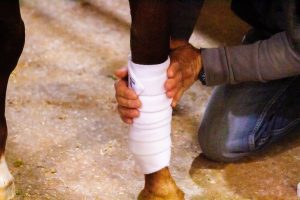
“The polos can be scary for some people because if you get them wrong, it does cause problems. If you wrap that polo the wrong way, you can pull the suspensory tendon to the outside which will cause you problems. If you get it way, way tight on them, it can cause problems, and if you get them way loose, then they just don’t do much. As far as polos go, it is always best to be around somebody that does understand them and knows them. I think it’s important to get good instruction when you are learning,” Ingram cautioned. “That being said, I’ve had very few injuries with a polo wrap, but I’ve also had people to teach me to keep them clean and do it the right way.”

Seth Ingram grew up on the back of a horse between Idaho and Wyoming training his first horse by eight years old and showing his first reiner at ten. He has since had a passion for training and showing reining horses. Ingram was 2002, 2007, 2009, 2012 Top Ten Rider in two NRHA Open divisions. He won the 2012 NRHA Derby Levels 1, 2, and 3 on Big Hollywood Dun. The horse and rider team was the first to win all four levels in 2012 at the DRHA Derby Bill Horn Memorial. In 2020, Seth rode Dreamin’ About Cash to the Level 1 NRHA Futurity Finals in Oklahoma City. He currently trains out of Seth Ingram Performance Horses in Purcell, OK where the Ingram family is proud to offer a full-care training and boarding facility. The beautiful property has fabulous show stalls, turnouts, a wash-rack, two riding arenas, and a working round pen. For more information, visit okitsreining.com.

